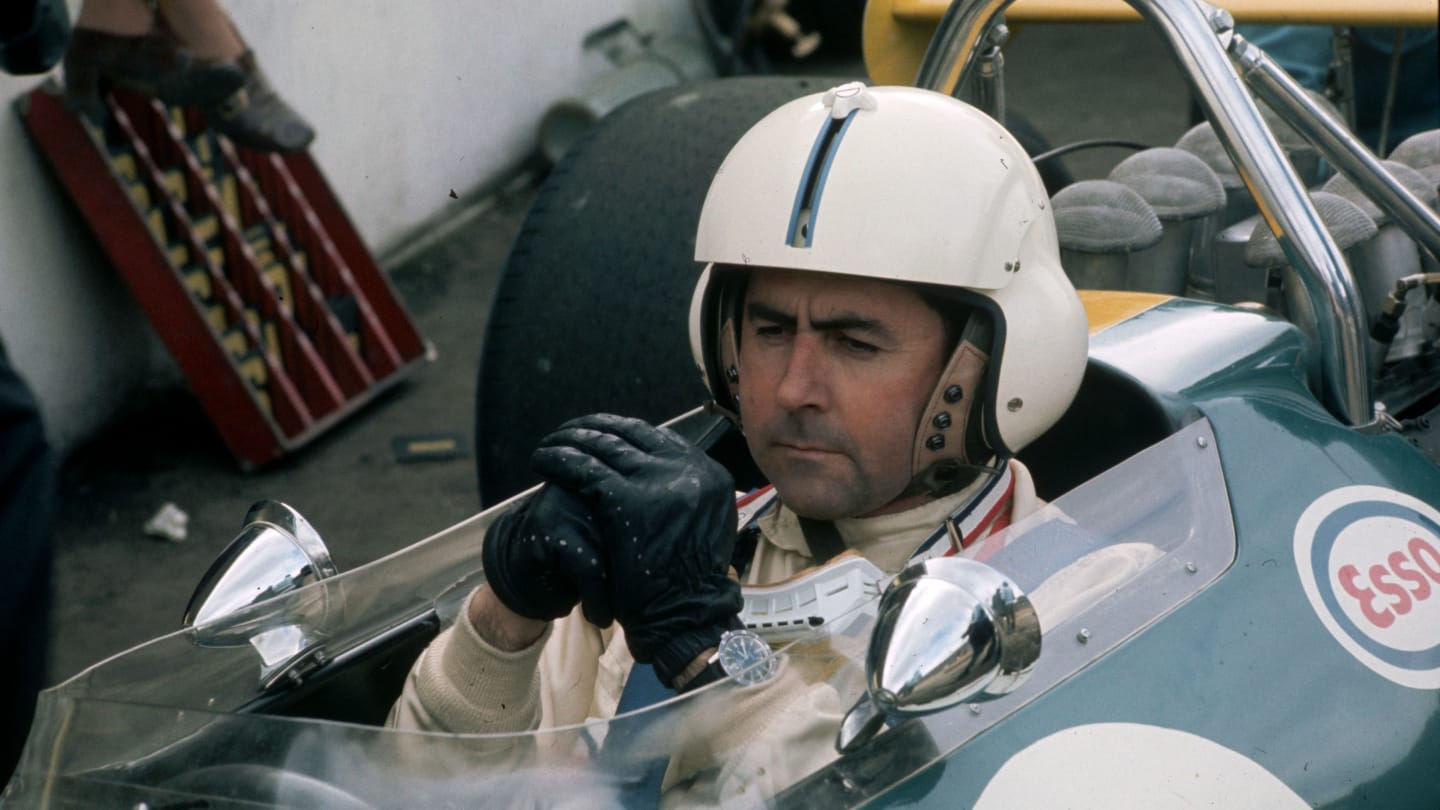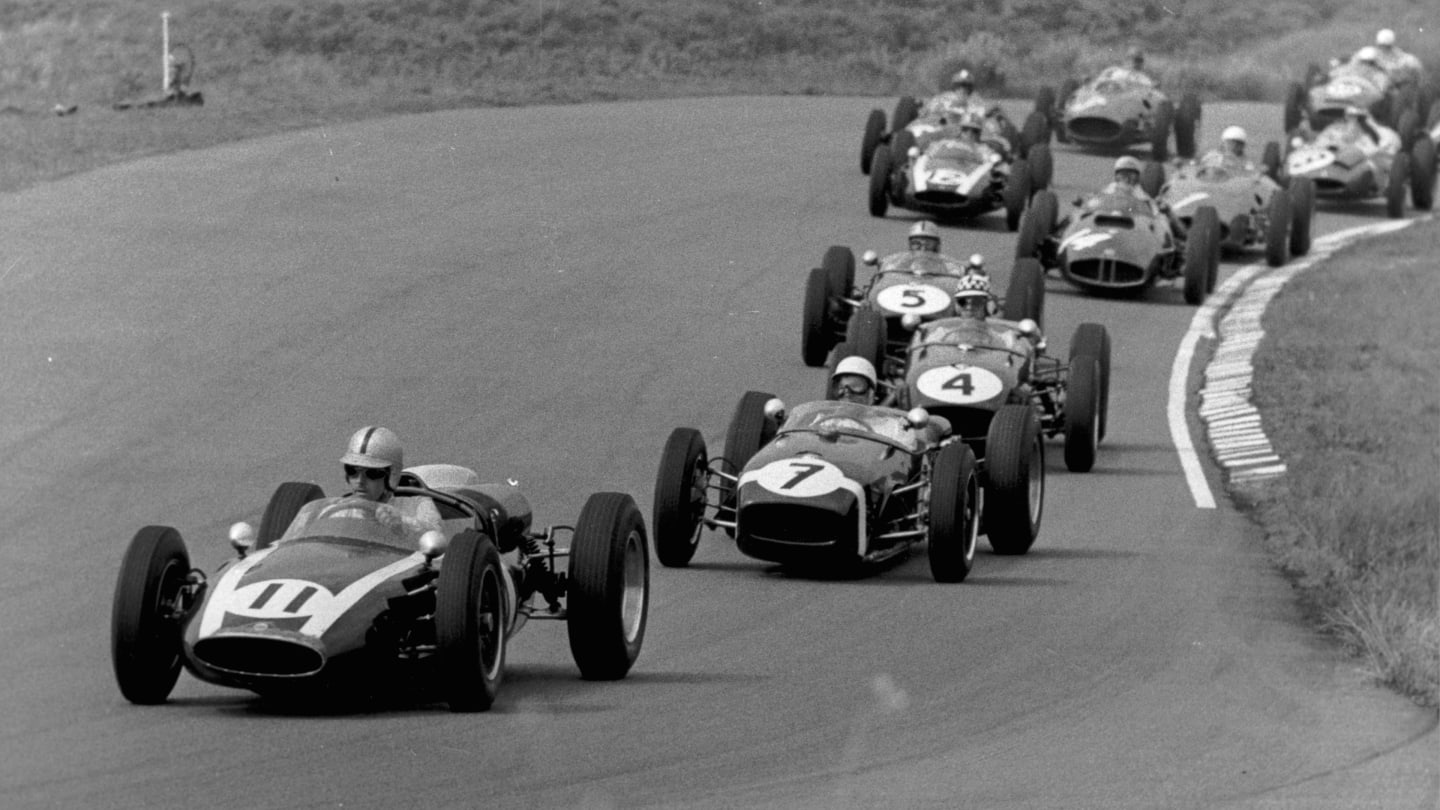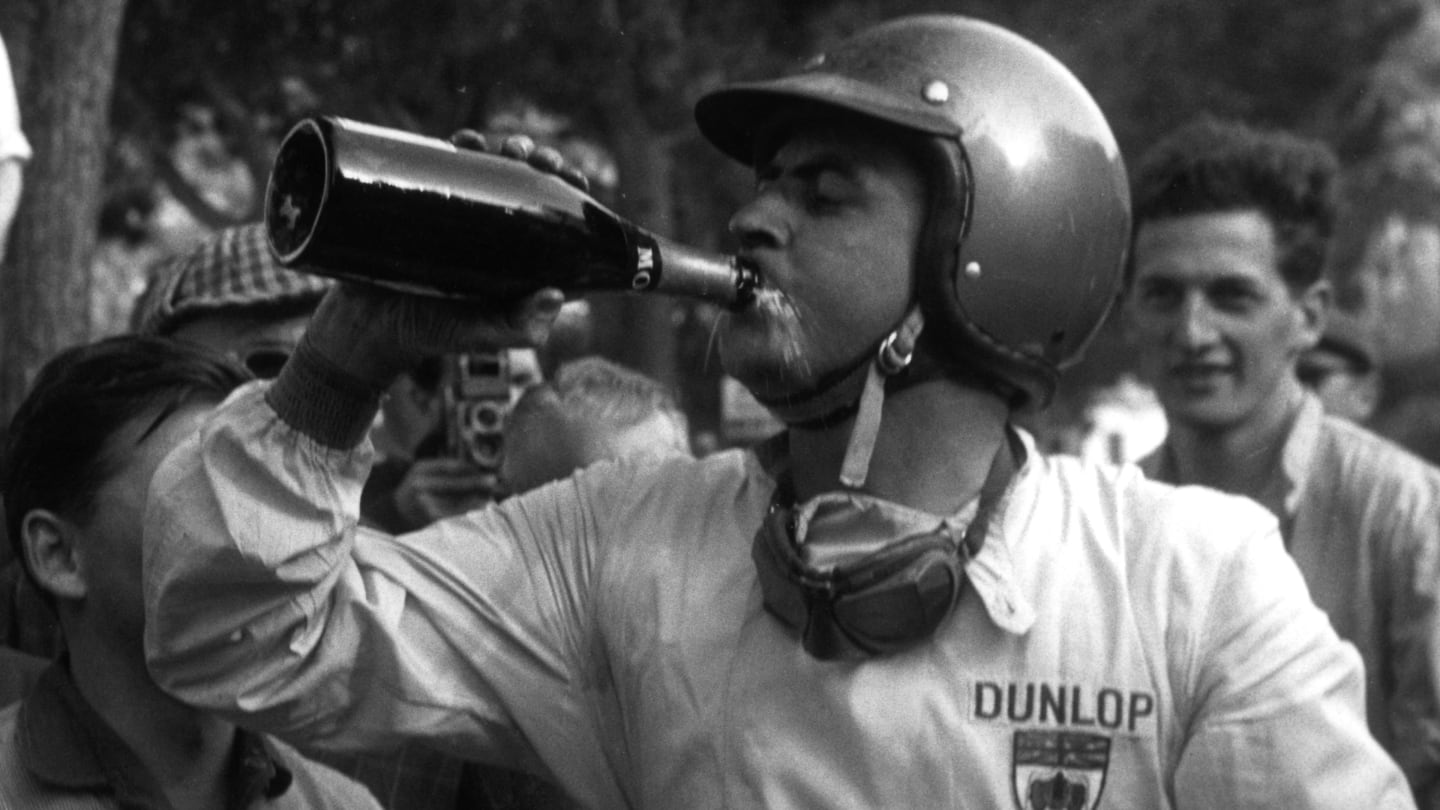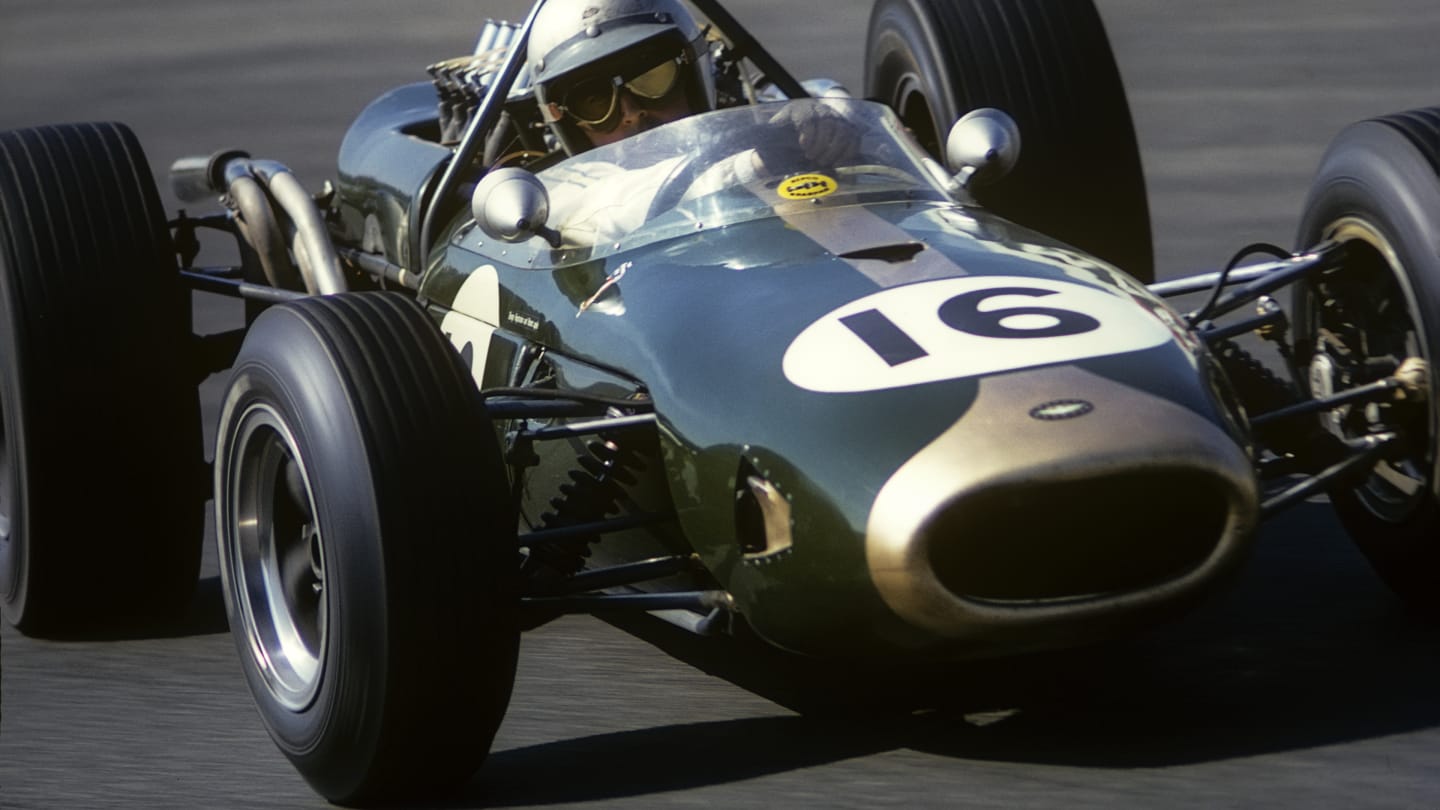
HALL OF FAME - 1959, 1960, 1966
Jack Brabham

Jack Brabham's three world championships were the product of both his engineering expertise and driving skill. His first two titles, in rear-engined Coopers he helped develop, confirmed the obsolescence of front-engined Formula 1 cars. His third title, in a Brabham, made him the only driver to become champion in a car of his own make. For his lifetime achievements, which also included nurturing the talents of other notable drivers and pioneering the business side of the sport, he became the first Formula 1 driver to receive a knighthood.
John Arthur 'Jack' Brabham, was born on April 2, 1926, in Hurstville, an Australian town near Sydney where his father was a greengrocer. From an early age Jack was far less interested in fruit and vegetables than in the Brabham shop's delivery vehicles. He learned to drive them long before he was eligible for a licence and by his early teens he was equally adept at keeping them roadworthy. His mechanical aptitude led him to a technical college where he studied practical engineering. Not academically-inclined, he left school at 15 and went to work in an engineering shop, then a garage. At 18 he joined the Royal Australian Air Force in Adelaide, where he wanted to learn to fly but was instead trained to fill a wartime shortage of flight mechanics. Upon his discharge, in 1946, an uncle in the construction business built him a workshop in Sydney, where Jack opened his own engineering establishment.

Brabham in his Cooper Climax leads at the start of the 1960 Dutch Grand Prix from Stirling Moss and Innes Ireland
In 1951 he married Betty, who became the mother of their three sons, Geoffrey, Gary and David, all of whom would race, though not nearly as successfully as their father. Jack's introduction to motorsport came through a friend who raced midgets on dirt track ovals. Jack helped him build a new car and when his friend decided to stop driving Jack took over and became a regular winner. In self-prepared midgets he won four successive Australian championships and was the 1953 hillclimb champion in a British-built Cooper-Bristol. Two years later his growing ambition to expand his motorsport horizons brought Jack to England. A meeting with John and Charles Cooper, constructors of his successful Australian car, led to a friendship and partnership that would propel the tiny Cooper Car Company and 'Black Jack' Brabham into the forefront of Formula 1 history.
With Brabham providing the inspiration (he helped persuade the Coopers to take the rear-engine route into Formula 1 racing) and the perspiration (he built up his first chassis in Cooper's workshop) the tiny British cars with the engines in the back sped to the front in an era previously dominated by big, front-engined Italian and German roadsters. In the Brabham-led team's first full championship season of 1958 the debut win for a Cooper came courtesy of Stirling Moss, who drove Rob Walker's private entry to victory in Argentina. In 1959 Moss won twice, but Brabham's victories in Monaco and Britain together with his consistently high placings resulted in the Australian winning a drivers’ title that some thought owed more to stealth than skill, an opinion at least partly based on Brabham's low-key presence.

Brabham celebrating his first Grand Prix victory in 1959 in Monaco
Always a man of few words - his nickname 'Black Jack' referred to both his dark hair and his propensity for maintaining a shadowy silence - he avoided small talk and was undemonstrative in the extreme. But behind the wheel he was anything but shy and retiring. He put his head down and drove exceedingly forcefully, opposite-locking his car dirt-track style, and was not averse to deliberately showering gravel in the face of a too closely following pursuer. His aversion for the limelight became more of a problem in 1960, when he completely dominated the nine-race series, winning consecutively in Holland, Belgium, France, Britain and Portugal, en route to his second successive championship.
Following an unproductive 1961 season, when the Ferraris were all powerful, Brabham left Cooper to form Motor Racing Developments, in partnership with the talented Australian designer Ron Tauranac. The MRD Brabhams were quickly successful in several categories of racing, particularly Formula Two where for several years they dominated, affording the opportunity for many drivers to advance their careers. The Brabham Formula 1 car, which first appeared late in 1962, became steadily more competitive as the team leader personally perfected the chassis set-up and fine-tuned the Climax engines. In 1964 Brabham had the satisfaction of seeing his team mate Dan Gurney win in France and Mexico.
For 1966, when the new 3-litre formula came into effect, Brabham persuaded an Australian company Repco (a manufacturer of automotive components) to produce a Formula 1 engine from a venerable Oldsmobile V8 design. Equally ancient was Brabham himself, or so it seemed to the media and his much younger rivals who used to kid him about his age. Prior to the 1966 Dutch Grand Prix, his first race after his 40th birthday, 'Geriatric Jack' Brabham hobbled onto the starting grid at Zandvoort, wearing a long false beard and leaning on a cane. Sportingly, several of his laughing opponents helped him into the cockpit of his Brabham-Repco, which happened to be on pole position. Tossing aside his beard and cane Brabham proceeded to win that race, a feat he also accomplished in France, in Britain and in Germany - on the notoriously difficult and dangerous Nurburgring - a victory he felt was the most satisfying of his career. Thus in 1966 Brabham became the first (and still only) driver, to win the championship in a car of his own make.

Brabham drifts his BT19 through the Tarzan curve at Zandvoort on his way to victory in the 1966 Dutch Grand Prix
Brabham also established the precedent for Formula 1 drivers to become pilots of their own planes. Though such transport at the time was exotic, Brabham's tastes remained simple. Distrustful of foreign fare, he flew his own steaks to the races. His passengers over the years included a succession of his Brabham team mates – Bruce McLaren, Dan Gurney, Denny Hulme, Jochen Rindt, Jacky Ickx – all of whom benefited from his tutelage and made their mark in Formula 1 racing.
Jack Brabham, whose final victory came in the 1970 South African Grand Prix when he was 44, chose that season to retire as a driver. The Brabham team was sold to Bernie Ecclestone and Jack returned home to Australia, where he busied himself running a farm, a car dealership and an aviation company, and helped his sons with their racing careers. His contribution to British motorsport was officially recognised in 1985 and he became Sir Jack Brabham. He passed away peacefully at his home in May 2014, aged 88.
Text - Gerald Donaldson